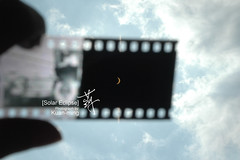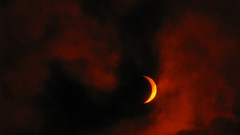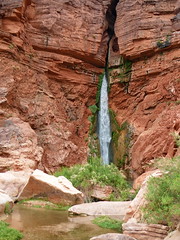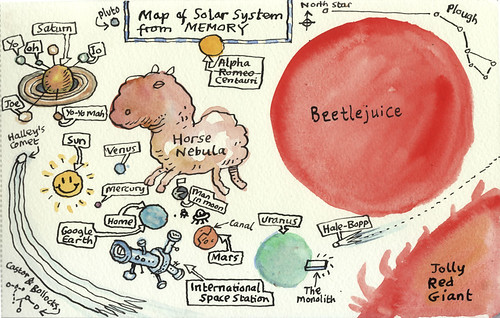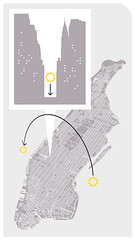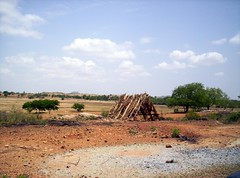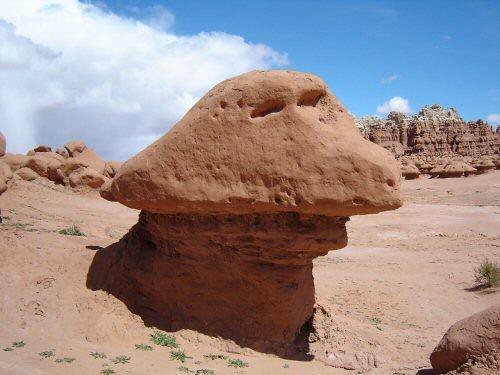
Friday, September 04, 2009
Thursday, September 03, 2009
It's play time....
Monopoly City Streets is having a worldwide, everyone's-in Monopoly game using Google Maps as the game board.
There's not much news about it now, just the blog. Will it be worlds of fun, or will the boringness (okay, so I really get bored playing Monopoly) scale up with the size of the game board?
Tuesday, September 01, 2009
The Station Fire from around the web
You know what's a scary thought? This fire grew and spread fast without the offshore Santa Ana winds that can pop up and push fires around at this time of year. I don't want to imagine what this fire might be like with the Santa Anas working their magic.
The Station Fire - this time with armageddon
After the Oakland Hills fire, officials sprayed the steepest hillsides with goo to glue the dirt together, mixed with wildflowers seeds - and the next few springs were stupendous. I'm not sure there's enough glue in the world for the San Gabriels, one of the fastest-rising and most fragile mountain ranges in the world -- but I hope they try something like that.
Thanks to Ian O'Neill for the pointer.
Who ya gonna call?
We definitely get lightning, and parts of the state get intense lightning.
When I was little, in Shasta County, the grid wasn't as robust as it is now. We'd get days where the temperature would be 100, then 105, then 110, and sticky humid, unlike what we're used to in parts of California that aren't the northwestern corner. Then kaboom, the angels would start bowling, as Mom described it, and we'd have a huge storm, and the rain would pour. The power would go out, and we'd eat hot dogs cooked on unbent metal hangars in the fireplace, and pop popcorn in my mom's old campfire popping basket, and toast marshmallows, and sing. We were a girlscouty sort of family like that. Then we'd go to bed, and at some point the next morning, the power would come back on, usually just in time to power our tiny air conditioning unit in the living room so that as the temperatures rose back up into the 90s, we could lie in front of it and read. If the gutters were still running, we'd go block off the storm drain with detritus and walk around in our boots or pretend to fish.
There are other parts of the state that get lightning storms. But for the most part, we don't get big thunderboomers in California, the storms slide on overhead and aren't terribly dramatic.
We worry a bit when they come over, sometimes, as our summers tend to be dry, and a dry lightning storm can be troublesome. But lightning doesn't terrify me the way it can people in, say, Florida, where death by lightning is generally understood as one of the ways to go.
Monday, August 31, 2009
Rambles through our country
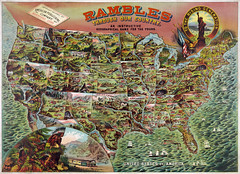
Rambles through our country, an instructive geographical game for the young, 1890
Originally uploaded by trialsanderrors.
(The caption says:
From the Popular Graphic Arts Collection at the U.S. Library of Congress....This picture is in the public domain.)
edited to add at 10:26 pm:
Linda says that you can find the maps on ebay, and that the rules are on google books! Yay!
Saturday, August 29, 2009
Station Fire - August 29/30
Time Lapse Test: Station Fire from Eric Spiegelman on Vimeo.
It's late and I'm sleepy, having paid too much attention to it today because a dear friend lives a couple of blocks outside of a mandatory evacuation zone. Things seem to be going reasonably well for her, in terms of how well the firefighters are protecting her little corner, but it's nerve-wracking.
The Briggs Terrace neighborhood is in worse shape -- okay for now, but transitions between night and day do weird things to weather and air circulation, and thus fire behavior.
Of course there are other fires burning in California. It's summer, after all.
That's the one capturing my attention right now.
Tuesday, August 25, 2009
We want you as a geography recruit!
YouTube, though, has disabled the audio for copyright reasons, so you might want to pull out your Village People cassette and put it on in the background while you watch.
Monday, August 24, 2009
You might be a geonerd if ....
Hurricane Bound For Texas Slowed By Large Land Mass To The South
Sunday, August 23, 2009
Yosemite is still one of my favorite places (and a foreign exchange student question)
Time Lapse Round One from Sean Stiegemeier on Vimeo.
Thanks to Backyard Zen for the heads-up.
Starting next week, I'll be taking an environmental writing course. I hope to edit some of my work there for this blog.
Also: Have any of you been foreign exchange students, and would be willing to talk to me about it for a post on this blog? Please let me know, if so, and pass this post and request on to anyone you know who might be interested.
Thanks. :D
Saturday, August 22, 2009
ah, for the wide open skies
Next spring, I think, I want to go up to Northern California -- the northeastern corner, Modoc County, and camp for a few days, and watch the Milky Way move like this:
Thursday, August 20, 2009
sense of place - bay laurel
Later, when my mother was engaged to a man with a huge ranch in Tehama County, we'd go out with him and help flake the hay for the cows (picture two kids, 11 and 7, riding on the top of a big pile of hay on a pickup truck, cutting the bale wire and flicking flakes of alfalfa off the back of the truck onto the hills in a meandering line, as the truck was slowly driven, cows lining up behind the truck, the kids working their way down, down through the stack of hay, until the truck was empty, it was a big job but it was just a basic kid chore) then he'd drop us into a little gully to play as he ran around and fixed fences and did rancher things. We'd get up under the oak trees and build fairy lands in the undertree litter, or play hide and seek, or make forts, or even read. We learned young how to avoid rattlers and poison oak and even mountain lions (uncommon, but not at all unknown), and we stopped thinking about them, they left our daily consciousness. I think Mom thought of them as one risk of a natural childhood. If one of us had gotten badly injured, we'd have been well away from help until the truck came back a couple of hours later, we were at least three miles from the nearest house. But we didn't think about that, and we were happy, and well exercised, and strong.
As an adult, I still seek out the nooks, the undertree forts, the thick, strong trees, the places that feel safe.
Sunday, August 16, 2009
Geography as a fascinating and relevant subject
The youtube account holder is "geogfilms," so I expect enthusiasm and lack of objectivity. ;)
Thursday, August 13, 2009
shakin' all over
A basic step, if you live in an area that could possibly have a big quake, is to keep a stash of supplies -- food, water, safety gear, extra sturdy clothing -- where you'll be able to get to it easily afterwards. I refer to the comprehensive quake-kit list at sfgate.com when I need a reminder of what to include.
My area is decidedly red. We live near a fault that's overdue for a big quake. I lived through the Loma Prieta (from 60 miles away -- it was scary where I was, and damaging, but not devastating) and spent a long time nervous about earthquakes, afraid. I still have some nervous responses, but mostly I'm better, and I'm working on being more prepared.
At our house, we have camping equipment stored in the garage, and we specifically keep it right near the garage door, near the floor, where we can grab it if we have to. Even if that building were to collapse, we could find the camping equipment. And we're pretty sure we can stay in our yard, there aren't any hazards and it's not likely to liquefy. We also have a pen for the dogs, just in case, and extra leashes.
We need to work on storing that in a more organized way.
We keep important papers hidden in a fire-proof safe that we can access easily after a quake. I'm not worried about things like jewelry -- I don't have much, and even for the emotionally important stuff, ultimately it's just stuff. We want to keep ourselves safe and hydrated, and we want to keep the dogs safe, hydrated, and as calm as possible. Everything else is extra.
There are some things I don't do nearly often enough, and I don't have ready. For instance, I don't have a flashlight in my bedroom where I can grab it easily, or sturdy shoes always right near the bed. Both of those are easy enough to fix. I'm pondering getting a cheapo kid's backpack at a thrift store and making a small, basic pack for next to my bed, and one for the car. (It's a station wagon, impossible truly to hide anything of any size in there. I don't want to be a break-in target.)
Is there anything else? I'm sure I'm forgetting things specific to me (e.g. make sure I have three or four days of medication in my quake kits), and there might be something specific to you that's not on any list, that you should remember. Extra glasses if you're used to contacts and can't see at all without help? Disposable diapers and wipes?) What would you want to have in a kit that's not on standard readiness lists?
Wednesday, August 12, 2009
white-hot meteors
The fog came in for us, and we saw none. This is the San Francisco Bay Area, where fog on summer nights keeps us cooler in the daytime, but makes star watching a real pain sometimes.
This little video makes me want to go somewhere more remote and clear, next August, and set up the camera with the 16 gb card in it, then drink hot cocoa and watch the skies.
Monday, August 10, 2009
Poor Japan
But as hard as the shaking looks, it was only 6.4, and there was no major damage (reported as of now, a few hours later, anyhow), and the tsunami was small.
Mind you, within twelve minutes away from this quake, a 7.6 whopper, probably an aftershock of the 2004 quake, shook the Bay of Bengal between the Andaman Islands and Burma. Tsunami-watchers waited nervously, but none materialized. The quake was more than 30 km deep, fortunately.
Sunday, August 09, 2009
Sierra Nevada watershed
It illustrates with LEDs the storage of fresh water in snow and ice in the Sierra Nevada, and its flow down the slopes, through the valley, and out to sea through the Delta and San Francisco Bay.
If climate change warms up and dries out California in the summer, as models currently predict, less water will be stored as snow over the winter, leaving less fresh water to flow out to sea and through the Delta in the summer. Not only will this mean less fresh water for immediate human use, but less for agriculture, wildlife, and fresh/salt balance in the Delta.
traditional map skills
Here are some traditional uses for maps that you might have forgotten about.
Saturday, August 08, 2009
To the edge of space
This would have been a life-changing experience for me, too -- the black above, the curve of the earth below, all one planet.
On my first airplane trip, a 24-hour flight to Australia, back when it took that long and required one or two refueling stops, I awoke at one point to sunrise over the Pacific Ocean. The colors broke into a spectrum, a horizontal rainbow on the horizon between some towering clouds in the distance, and I nearly cried.
This was something my great-grandmother could never have had.
I wonder what the children coming after us will see.
Saturday, August 01, 2009
The more you know
"Are humans causing the climate to change/warm because of greenhouse gases and other anthropogenic activities?"

That's from @danwhnt, one of my favorite Twitter geonerds. (And it's much easier to read if you click through to the big one.)
I'm curious if so many non-experts believe climate change isn't largely anthropogenic because various media sources think they have to be balanced, and provide the viewpoint of one denier for every scientist who explains why humans provide a huge chunk of the fuel to drive climate change.
playing Ohio
In this flash application, Ohio's counties are given piano notes (which you can vary according to geographic data) and you can play songs, freeway routes, or other demographic data laid on top of that.
Ohio as a piano
In the two songs provided, I think the music might have been poorly transcribed, but there's only so much flash can do, right?
Friday, July 31, 2009
finding like minds
Anyone proudly using that one (or spreading geonerd jokes, and "you know you're a geonerd when....") is someone I'll probably enjoy getting to know.
Natural wonders
The youtube page says, "investigates unique deserts, coral reefs, waterfalls and other atypical natural phenomena." How are these atypical? I don't quite get it. Do they mean "special"? At any rate, these are neat, within a basic educational film.
oh the places you'll go

Mary Agnes Chase (1869-1963),
sitting at desk with specimens
Originally uploaded by Smithsonian Institution.
I'd gotten frustrated at my local community college for running out of classes I need to take, and want to take, this year. You see, I (*sigh*) procrastinated finishing my application for the local Cal State university geography program long enough that the state budget crisis interfered, and the university system decided not to admit any more applicants this school year for winter and spring quarters. This means I can't take classes, unless I'm willing to pay a lot for Open University classes (and there's room in them, unlikely given that cuts also reduced the total number of classes), until next fall.
So I'm trying to fill my year with classes that I don't need (as there are no more lower division classes that I need, period, ever) but that will be fascinating and most important, useful, both in my classes once I do get to the university, and in my career after that.
The community college where I'd been finishing geography (required) and astronomy (fun!) classes had run out of things for me. So I poked around.
And wow - it turns out another local community college has so many classes I could get a second AA (hush, I won't ... or will I?) before going on.
Check this out, classwise:
Environmental writing (I'm not sure if this is a study of environmental literature or learning how to write about it, and I don't care! Whee!)
Early childhood environmental education
Intro to creek watershed restoration
American Indian history and culture
Civilization's impact on the environment: psychology of trashing the earth
Environmental racism and justice
Natural History field classes (a few courses: local herpetology, local ornithology, Monterey Bay, Devil's Postpile)
Habitat Restoration Gardening
Wildlife and watershed
Contemporary Native Americans in the bay area
Permaculture design
I'm just blissed out, here. And that doesn't even count GIS and Spanish.
I can't take them all, but there are enough that I can fill my year with fun.
Wednesday, July 29, 2009
Remembering Apollo 1
On January 27, 1967, Apollo 1's crew--Virgil I. "Gus" Grissom, Edward H. White II and Roger B. Chaffee--was killed when a fire erupted in their capsule during testing. Apollo 1 was originally designated AS-204 but following the fire, the astronauts' widows requested that the mission be remembered as Apollo 1 and following missions would be numbered subsequent to the flight that never made it into space.
Wow.
That's lovely.
Saturday, July 25, 2009
Friday, July 24, 2009
obsessive geography brain

I was poking through Grant Imahara's stuff on Twitpic, and found this bridge photo. It's a "from the set" photo, so I assume it's in California, though it might not be. It has California native palms, though Washingtonia palms are used in landscaping so they're everywhere now. It's recent, so it's not the new Zampa bridge being built at Carquinez Strait, right? And it doesn't look like Carquinez Strait anyhow. Where are other steel truss bridges that high in California? What's going on behind it, are they working on a new bridge?
I'm going to poke around online until I find it or can't justify not getting up to plan for a trip we're headed out on soon. (I'll take pics, I could just turn Geographile into a vacation pictures journal. Wouldn't that be fun. :) )
In the meantime, if you know where this picture was taken, please let me know. This isn't a Mythbusters fan thing, it's a MUST KNOW GEOGRAPHY thing. It's an obsession. Clicking through on the picture will make it bigger for you.
(edited to add: Old span of Bay Bridge with new one under construction behind it. I see this a few times a week. But the scale seemed all wrong to me, this seemed much too small for it. Also, I didn't recognize the foreground, which is probably in Alameda or along the Oakland waterfront. Thanks to Paul and Bill for nudges.)
Edited again, July 24: DUH! Casey pointed out that I could have the direction completely wrong, and I did. Google maps confirms it's along Avenue N in the northeast corner of Treasure Island, in the middle of San Francisco Bay.
Wednesday, July 22, 2009
(maybe not) just one more
July 22th, 2009
Solar Eclipse
Taipei
Tuesday, July 21, 2009
Bring on the quakes

Click through to see the full size.
Yes, it's a lovely picture of totality, but so many of those show just the moon and corona and maybe a diamond ring.
But for this, having the boats in the foreground, and the clouds, and the slight texture of the water, make it truly amazing to me. This would be a fabulous print... at least, for nerds like me.
日蝕 Eclipse
So far, so good on the megadisaster. I found more than a few things on the web warning folks to stay off the beaches in India because of the potential for a massive quake in Japan that would somehow cause tsunamis in India.
There are total eclipses on this planet with relative regularity, and earthquakes every day, including a few large earthquakes every year.
My fingers are crossed that Asia won't coincidentally have a big quake in the next few hours, or we'll never hear the end of it from people who think the eclipse caused it.
On first seeing the Colorado River Basin
The upper two-thirds of the basin rises from four to eight thousand feet above the level of the sea. This high region, on the east, north, and west, is set with ranges of snow-clad mountains, attaining an altitude above the sea varying from eight to fourteen thousand feet. All winter long, on its monutain-crested rim, snow falls, filling the gorges, half burying the forests, and covering the crags and peaks with a mantle woven by the winds from the waves of the sea -- a mantle of snow. When the summer-sun comes, this snow melts, and tumbles down the mountain-sides in millions of cascades. Ten million cascade brooks unite to form ten thousand torrent creeks; ten thousand torrent creeks united to form a hundred rivers beset with cataracts; a hundred roaring rivers unite to form the Colorado, which rolls, a mad, turbid stream, into the Gulf of California
My battered copy of this book, which I bought for 25 cents from a box in front of a small used-bookstore, is one of the geographilic books I can just lie around and read bits of, over and over again.
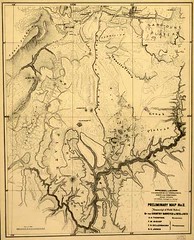
John Wesley Powell
 , with one arm, with food supplies that got wet and moldy over the weeks, with boats and crew gradually wearing out and falling apart, or leaving the party, made it, more than once, from one end of the Colorado to the other, and wrote richly about what he saw there.
, with one arm, with food supplies that got wet and moldy over the weeks, with boats and crew gradually wearing out and falling apart, or leaving the party, made it, more than once, from one end of the Colorado to the other, and wrote richly about what he saw there.





Of course, then we submerged many of his cataracts and fern-lined canyons with the reservoir that bears his name.

Monday, July 20, 2009
Thank God men cannot fly
Adventure for its own sake ... and for science
When I was a little girl, we would lie out in the back yard, or on the hood of the car, and stare at the moon, trying to see lunar landers. Mom never told us it was ridiculous for us to try to look, that we'd never see it. She never pretended she saw it, or tried to give us false hope. She just allowed it. She patiently listened as we came in to tell her our stories, sure we'd seen it. She ignored bedtimes, when Apollo missions were working. She made sure that we got to watch them on TV, every single time, every launch, every moon landing, every splashdown in the ocean at the end. It was part of the fabric of my childhood.
I hope we never stop adventuring for the sake of science ... for the sake of adventure, either. But for science.
This picture of Neil Armstrong after his first Apollo moonwalk, or EVA, on July 20, 1969, is one of my all-time favorite astronomy-related photos. Look at his face: It is glowing with rich delight.
(.... One small step for a man ....)
Sunday, July 19, 2009
name-dropping
He's truly and simply excited, and good at explaining the science he's researching in space, as well as other little things like "how do you eat peanut butter and honey in space?"
He's got a strong sense of wonder, and appreciates the question "what will happen if I do this?"
Dr. Pettit spoke at NASA Ames Moonfest, which is the main reason I went.
Some of my favorite questions from people at Moonfest:
"Can you see a solar eclipse from space?" from a kid. Pettit said it looked like illustrations in a textbook, with a visible umbra and penumbra on the ground, and yes, he's seen one.
One very young child asked, "How old do you have to be to go in space?" Pettit said that technically there's no lower age limit (upper either, for that matter) but that people should go to college, get a degree, then do something with it that shows NASA that you would be useful on their team. Most folks are within a few years of 40 when chosen. And he's going back in a couple of years, via Soyuz, to work on the ISS again.
One child asked, "if you sneeze in space is there just a glob of spit floating around?" There was much laughter. Pettit said that when you sneeze on the ISS or shuttle, you can just reach out and grab it with a dry wipe (I suppose that would be the glob, rather than the atomization), but inside a helmet, "You just have to live with the results."
Pettit also shared that they call the new toilet -> urine-processor -> galley setup the "coffee machine" as it turns yesterday's coffee into today's.
Robert Glennon on the water crisis
| The Daily Show With Jon Stewart | Mon - Thurs 11p / 10c | ||
| www.thedailyshow.com | |||
| |||
Thanks to Aquafornia for the link pointer.
(Perhaps we shouldn't be drinking from the toilets, but why not put a hand-wash basin on top of the toilet?)
Saturday, July 18, 2009
from the most trusted man in America
I am joining the hundreds of thousands who shall be marching in this virtual march to demonstrate the concern that we all hold for the future of our planet and all the living things -- flora, fauna, human and animal -- that exist upon it. The governments of the world have tarried long enough, and the United States is scarcely without doubt the greatest culprit among them.
We the people have the strength to bring our country from our weak-kneed stumbling gait in the last ranks of reason to the leadership of the great march to environmental victory.I want to be in that parade and if there is a place up front I'd wish to lead the band or at least be assigned a big bass drum to help pound out the rhythm of glorious success.
- Walter Cronkite
I will miss him.
Friday, July 17, 2009
still good with regard to madagascar

The BBC has an animated map showing the spread
of swine flu globally. Iceland, Fiji, Morocco ... it's getting around.
It's still not in Madagascar. It's just a matter of time....
Thursday, July 16, 2009
Tuesday, July 14, 2009
Hot town, summer in the city

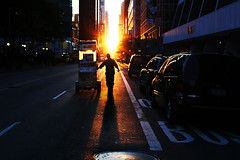



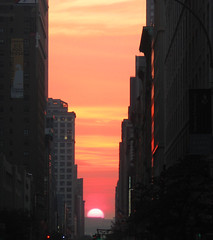



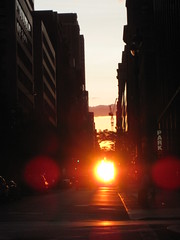


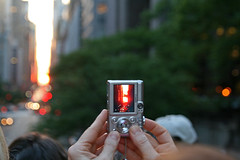


ocean's edge processes - I was transfixed
That said, I'm not sure it helped my understanding of the ocean's edge. I had to poke around on the web afterwards to figure out what a tombolo is.
Monday, July 13, 2009
If there were a simple answer ....
But this, in The Guardian:
It was a little after 8pm when the water started flowing through the pipe running beneath the dirt streets of Bhopal's Sanjay Nagar slum. After days without a drop of water, the Malviya family were the first to reach the hole they had drilled in the pipe, filling what containers they had as quickly as they could. Within minutes, three of them were dead, hacked to death by angry neighbours who accused them of stealing water.
I think we can slow, but not stop climate change, and doing so won't be enough to prevent real suffering. Controlling population will help, but how? We have to almost stop. Otherwise, it will get much worse before it gets better.
So far, I'm not one of those people who believe that technology will help us cope with 10 billion people on the planet, or 15 billion people. Or rather, technology will help, but it certainly won't make it better, just perhaps not as horrible as it could become.
And deep down, I don't think it's ethical or good public policy to enforce family size or procreation. (Look at China: Too many boys, second children -- or first, if girls -- given to orphanages, and rural/poor people still having extra children. "One Child" is controlling the population, but at what cost? And how can we compare that usefully to what Asia would be like now otherwise?)
I get fussy about countries like Japan and Norway complaining about low birthrate and encouraging people to have more babies so there will be someone around whose taxes can care for an aging population. I got downright grotty at Australia's John Howard, who encouraged Australians to have more babies even as the country was running out of water. But then what do they do to keep the population balanced?
I'd say they should be encouraged to adopt from poorer parts of the world -- but that way has led, in the past, to tragic exploitation. I'd say they should encourage families with young children to immigrate from areas that are more bottom-heavy in the age demographic department but then who supports these families as their children are educated and enculturated in the new country, as they move toward long-term residency, citizenship, and tax-paying status? And how do you get past the historically xenophobic practices in some of these developed countries?
I don't feel like I can write about this logically, but I'd like to somehow.
If there were a simple answer, we'd be implementing it right now. No?








